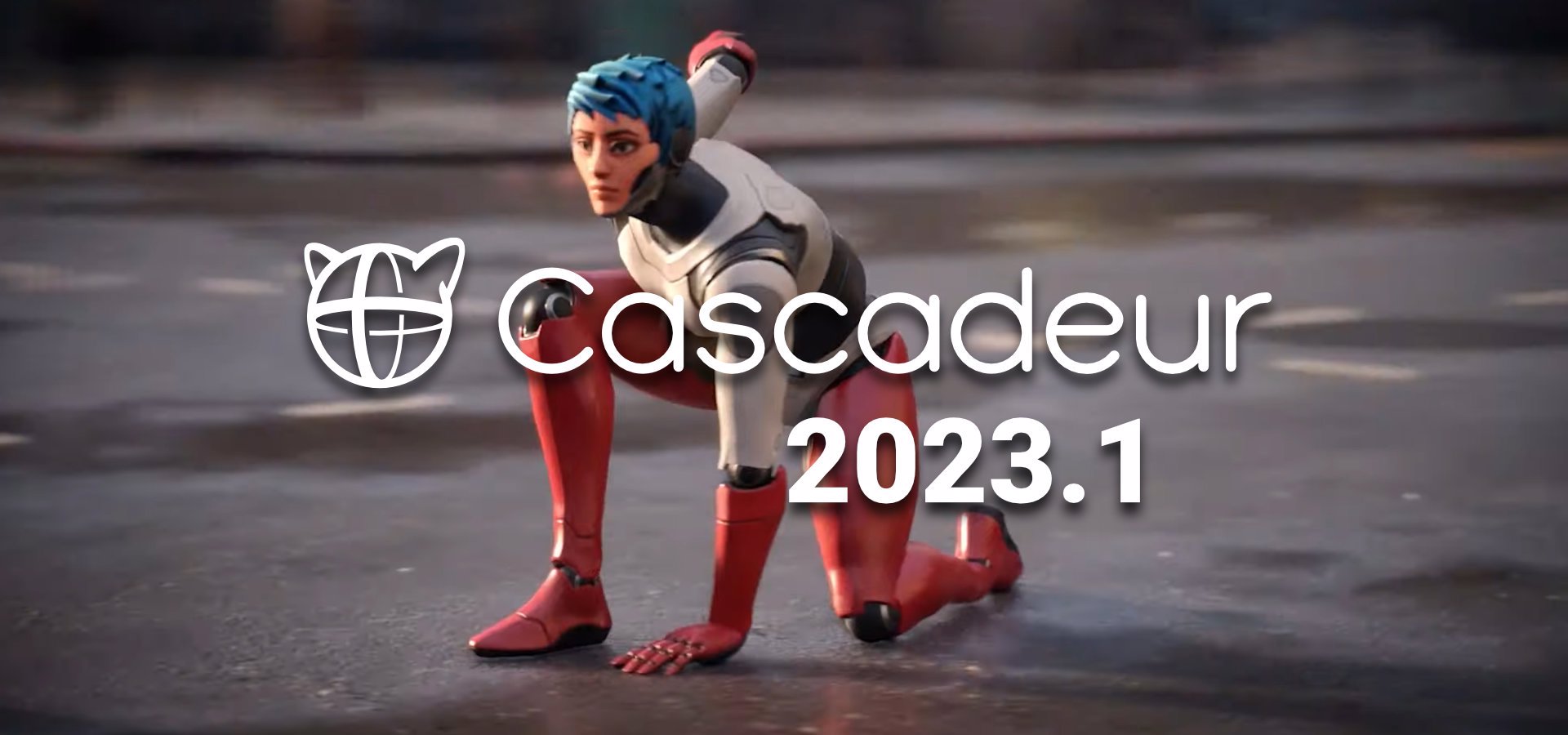Blender, the popular, free, and versatile 3D software package, has been updated to version 4.3. This release offers an array of improvements, including upgrades to Geometry Nodes, a Grease Pencil overhaul, a new brush workflow, and more.
Without further ado, let's take a look at the standout features of this release:
Geometry Nodes
This update places a strong focus on enhancing Geometry Nodes, introducing several new features in this area. Among these is the For Each Element Zone, a new type of loop zone that simplifies repetitive tasks by enabling parallel iteration over elements of a geometry.
Gizmos can now be added to node groups, allowing users to edit node tree inputs directly in the 3D viewport, creating a more intuitive and hands-on experience.
The Set Geometry Name node is another improvement, making it easier to assign names to geometries with automatic initialization based on object and collection names. Geometry Nodes now work seamlessly with Grease Pencil data, breaking it into layers, curves, and custom attributes, allowing each layer to be processed independently.
Custom warnings can now be added to node groups using Warning Nodes, enabling dynamic messaging directly in the interface. Additionally, warnings in the Geometry Nodes modifier are now displayed in a reorganized panel, sorted by severity and alphabetically to improve clarity.
Other enhancements include the ability to pack bakes created with the Bake node or Simulation Zone directly into the .blend file, alongside several new geometry nodes that further expand the toolset.
Grease Pencil
In this release, the Grease Pencil engine has been completely rewritten, delivering improved performance and addressing existing limitations.
The new Layer Groups feature helps users better organize their layers, making Grease Pencil objects easier to manage. Layer groups can be color-coded using tags and offer options for toggling visibility, locking, and enabling onion skinning.

A new Fill Gradient tool allows users to adjust fill gradients easily by selecting fill strokes and click-dragging with the Gradient tool.
Additionally, the eraser tool has been revamped to enable precise "cutting" of strokes. It now correctly resolves intersections at the eraser's edge and creates new points on the stroke for a smoother editing experience.
Brushes
Starting with this release, brushes are now assets, making it easier to save, share, and reuse them through the Asset Browser. With over 100 default brushes and an improved interface, the new brush workflow simplifies managing, customizing, and accessing favorite brushes across projects.

Textures
A new texture node has been added that generates procedural Gabor noise with random interleaved bands, allowing control over direction and width.

Shaders
A new Metallic BSDF node has been added to the shader editor, making it easier to access metallic material settings that were previously hard to reach. This node includes an artist-friendly F82 Tint approximation which takes color inputs, similar to the one used in the Principled BSDF. Additionally, the node offers a Conductor Fresnel type, which, although more complex to use, can produce more accurate results for real-world metals.

EEVEE Renderer
The real-time renderer EEVEE now supports Light Linking and Shadow Linking, features that were previously available only in Cycles.
With Light Linking, lights can be restricted to affecting only specific objects in the scene. Shadow Linking adds the ability to control which objects act as shadow blockers for a light, bringing EEVEE's capabilities in line with those of Cycles.
Compositor
EEVEE passes are now available for interactive compositing, enabling multi-pass compositing that allows users to create complex NPR setups and effects directly in the 3D Viewport.
Additional updates include a new Color Balance White Point conversion mode and a global Save As Render option. The GPU Compositor now supports meta-data for exchanging Cryptomatte through EXRs using the File Output node. Additionally, the Compositor Auto Render feature has been removed.
UV Editing
A new iterative unwrapping method called "Minimum Stretch" has been added, which reduces distortion by gradually refining the unwrap results. This method is ideal for organic shapes and uses the SLIM algorithm (Scalable Local Injective Mappings) internally. It can be accessed from the Unwrap menu as well as through "Live Unwrap."

Other updates in UV editing include support for manually defined seams in UV Sphere and Cylinder Projection, as well as two new Select Similar options: Winding and Object.
UI (User Interface)
The UI has seen several improvements, with Area Docking being a standout feature. Area Docking allows users to detach an area into its own window or dock it back into another area.
Tooltips now offer more detailed information and can be customized to improve accessibility, with dedicated style settings for font size, weight, and shadows.
Additionally, among many other UI improvements, a new theme option enhances accessibility by adding more prominent highlights around an area when the mouse hovers over it.
Video Sequencer
The Video Sequencer introduces several new features and performance improvements, with highlights including Connected Strips and Snapping.
Strips can now be connected, making selection and transformation easier. The Sequencer Preview now supports snapping, with snapping targets such as preview boundaries, the center, and the corners/origins of other strips.
The above is just a summary of some of the key features in this release. For a complete list of changes, be sure to check out the official Blender 4.3 Release Notes.




